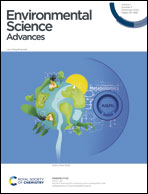Below zero†
Abstract
The current climate debate focuses on how to reach net zero latest by 2050. Most transformation pathways rely on negative emissions to compensate “hard-to-avoid” emissions, for example in aviation, industry or livestock farming. However, even a constant global heating at 1.5 °C may trigger climate tipping points, such as the loss of cryosphere, permafrost or ecosystems. It therefore becomes necessary to achieve “below zero” with large-scale negative emissions, reducing atmospheric CO2 concentration and climate forcing. This paper argues for a systemic view and shows with a comparison of past, current and future carbon stocks and flows that storing the minimally necessary removals will already be challenging. Consequently, continued fossil emissions shall be avoided completely, as their compensation increases removals and binds societal resources. For delivering the required scale and speed of negative emissions, scalable technical solutions will have to developed, as bio-based solutions are limited though essential for reverting land use impacts and safeguarding biodiversity. In this context, it is important to investigate the potential of a circular carbon economy, storing carbon in safe and reliable material cycles.

- This article is part of the themed collection: Environmental Science Advances Recent Review Articles


 Please wait while we load your content...
Please wait while we load your content...